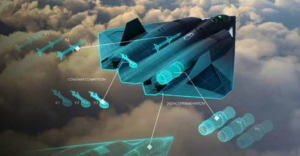While the unit flyaway cost of the Lockheed Martin [LMT] F-22 was $155 million in today dollars and the unit flyaway cost of the company’s F-35A is running more than $85 million, the manned component of the U.S. Air Force’s classified Next Generation Air Dominance (NGAD) program may be significantly higher.
“This is a number that’s going to get your attention, but we’re talking about prices that are multiple hundreds of millions of dollars for NGAD on an individual basis,” Air Force Frank Kendall told the House Armed Services Committee (HASC) in response to a question from Rep. Donald Norcross (D-N.J.) during an Apr. 27 budget hearing.

Norcross chairs the HASC tactical air and land forces panel.
NGAD is to replace the F-22 in the 2030s, but during the Apr. 27 hearing Norcross said that NGAD “is projected to come in much later than we originally had expected” and that such a schedule slippage could mean that the Air Force would have to delay retirement of the F-22 and pay higher sustainment costs or devise a workaround to address a gap between F-22 divestiture and the fielding of NGAD.
While Kendall said he could not discuss the exact NGAD fielding schedule during an open hearing, he said that initial NGAD capability is expected in “the early 2030s.”
The Air Force’s fiscal 2023 budget requests nearly $1.7 billion in research and development for NGAD. While the Air Force had relied on a “high-low” fighter mix for years, for example the Boeing [BA] F-15C and the Lockheed Martin F-16, the service has moved more to the high threshold, and Kendall has said that the Air Force will need to field a more affordable mix, including a significant complement of combat drones, to have a sufficient number of platforms in the service’s force structure.
NGAD and the Northrop Grumman [NOC] B-21 Raider stealth bomber are to be play callers for such drones under Kendall’s vision.
NGAD stemmed from the Aerospace Innovation Initiative, kicked off in 2015 by Kendall when he served as former President Obama’s DoD acquisition chief. Kendall said that the initiative led to a contract before the end of the Obama administration to investigate needed technologies for a sixth-generation fighter. Before the Aerospace Innovation Initiative, the Defense Advanced Research Project Agency (DARPA) had spearheaded an Air Dominance Initiative–a two-year study, begun in 2013, on a “family of systems” approach that would tie together sensors, weapons and battle management for a future fighter.
The Air Force wants to use a number of drone research and development programs as feeders for a classified, service program to field combat drones by 2030 (Defense Daily, Feb. 7).